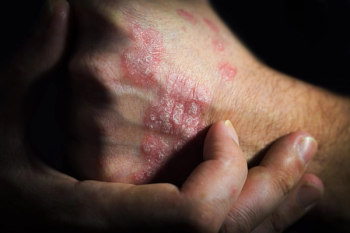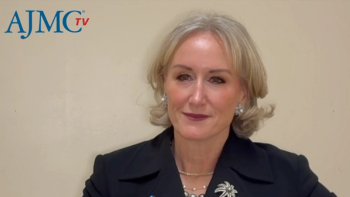
Nerandomilast Slows Lung Function Decline in Patients With IPF
Key Takeaways
- Nerandomilast significantly slowed lung function decline in patients with IPF, with the 18 mg dose showing a 68.8 mL FVC decline reduction compared with placebo.
- The trial included 1177 patients, 78% of whom were on standard antifibrotic therapy, highlighting the need for additional IPF treatments.
The latest results from the phase 3 FIBRONEER-IPF trial showed consistent benefit of nerandomilast in patients with idiopathic pulmonary fibrosis (IPF) whether or not they were receiving background antifibrotic therapy.
Nerandomilast (BI 1015550; Boehringer Ingelheim), an oral phosphodiesterase 4B (PDE4B) inhibitor, significantly slowed lung function decline over 52 weeks in patients with
The data, which were presented at the American Thoracic Society (ATS) 2025 International Conference and published in
Patients taking 18 mg of nerandomilast experienced an adjusted mean FVC decline of 114.7 mL compared with 183.5 mL in the placebo group, with an adjusted difference of 68.8 mL (95% CI, 30.3-107.4; P < .001). The 9-mg dose also showed a statistically significant difference with an adjusted mean FVC decline of 138.6 mL, marking a difference of 44.9 mL compared with placebo (95% CI, 6.4-83.3; P = .02). These results held up in both patients taking background antifibrotic therapy and those receiving nerandomilast as monotherapy.
“The positive findings of the phase 3 FIBRONEER-IPF trial follow more than a decade of clinical research in IPF that yielded largely negative results,” investigators said. “The loss of FVC observed over a period of 52 weeks in the placebo group of this trial, despite more than three quarters of the patients already taking antifibrotic therapy, highlights the need for additional therapies for IPF.”
The investigators also explored subgroups by background therapy. In patients not taking background antifibrotic therapy, the FVC decline was –79.2 mL for the 18-mg nerandomilast group compared with –148.7 mL for placebo. Among patients taking nintedanib, the FVC decline was –118.5 mL vs –191.6 mL, respectively, but in patients taking pirfenidone, only the 18-mg dose of the PDE4B inhibitor showed benefit, likely due to reduced plasma concentrations from drug interaction.
Patient-reported outcomes such as dyspnea, cough, and fatigue did not differ significantly between groups. The secondary composite outcome of time to first acute exacerbation, hospitalization for a respiratory cause, or death occurred at similar rates across all groups, with no statistically significant differences.
From a safety perspective, nerandomilast was generally well tolerated. Diarrhea was the most frequently reported adverse event, occurring in about 41% of patients taking the 18-mg dose and 31% taking the 9-mg dose, compared with 16% in the placebo group. Still, fewer than 4% of patients discontinued the drug due to diarrhea. Serious adverse events of interest were balanced across treatment groups, including depression, suicidality, vasculitis, and liver injury.
“Safety data suggested that the adverse events that were associated with nerandomilast are manageable,” the authors wrote.
While the study was not powered to assess mortality or long-term outcomes, the results represent a meaningful step forward in IPF treatment, as options are currently limited to nintedanib and pirfenidone to slow disease progression.2
References
- Richeldi L, Azuma A, Cottin V, et al. Nerandomilast in patients with idiopathic pulmonary fibrosis. N Engl J Med. Published online May 18, 2025. doi:10.1056/NEJMoa2414108.
- Klein HE. FIBRONEER-IPF trial of nerandomilast meets primary end point. AJMC®. September 19, 2024. Accessed May 18, 2025.
https://www.ajmc.com/view/phase-3-fibroneer-ipf-trial-of-nerandomilast-meets-primary-end-point
Newsletter
Stay ahead of policy, cost, and value—subscribe to AJMC for expert insights at the intersection of clinical care and health economics.












































